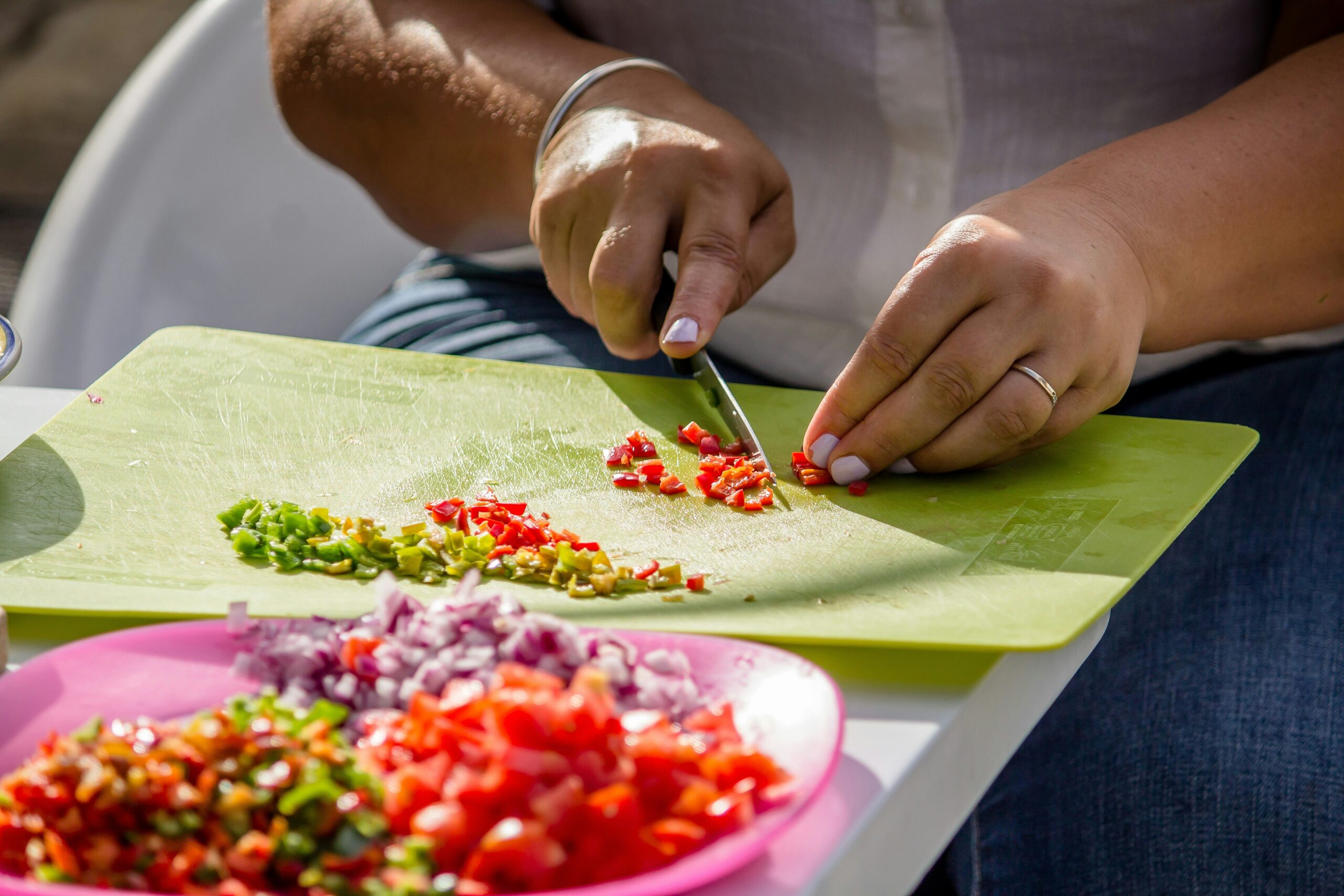Four Key Food Behavior Change Motivators in a Tribal Community

By Anastasia Cabral, RD
Periodically, our partners across the US share important participant and patient feedback. This is incredibly helpful to:
- Highlight the most impactful curriculum elements;
- Identify which evidence-based Experiential Drivers of Behavior Change are especially motivational for a particular population;
- Support curriculum improvements.
Recently, new partners in Nevada completed the first cohort of our culinary medicine program, Deliciously Healthy, at a federally qualified health center. The program is operated by Washoe Tribal Health Center in Gardnerville, located on tribal land in rural Nevada.
Thanks to observations shared by instructors Lindsay Jessup and Taylor Cruz, four take-aways point to the behavior change drivers and components that offered greatest boost to patient health behavior transformation:
- Recipe Concepts Empower Participants
Patients really appreciate the ‘Recipe Concepts’. Deliciously Healthy’s customizable recipe templates allow patients to pick and choose ingredients based on their preferences. According to Lindsay, “patients shared the templates empowered them to explore new fruits and vegetables. This flexibility encouraged creativity and made healthy eating feel more accessible.” She also reported that many patients even experimented with foods and techniques not taught in the program, integrating them into their regular meal routines. - In-Person Collaboration Foster Community and Enhance Learning
Deliciously Healthy was developed during Covid, and was implemented virtually. Yet post Covid people have been starved for opportunities to be with others for shared experiences. The Washoe Tribal Health Center decided to run the program in-person. This proved vital for their patients. Lindsay noted that “the tactile, social experience of cooking together enabled participants to engage more deeply. Elders often helped younger participants, sharing their own cooking techniques and tips.” This dynamic fostered a much-missed sense of community and ‘collaborative learning.” Collaboration is another of the 10 evidence-based behavior change drivers that enhance TK session outcomes. - New Skills Help Combat Food Insecurity
At FamilyCook we’ve long maintained that food insecurity can be partially addressed through culinary skill development. When food dollars are limited, resourcefulness in the kitchen can still yield delicious, nutritious meals. It just requires some basic cooking know-how. Among the Washoe community, Lindsay was happily surprised at how well participants applied what they learned to make the most of their available resources. She noted that ‘learning new skills and using adaptable recipe concepts helped participants stretch their food dollars, reduce waste, and make healthier, home-cooked meals without additional grocery trips.” This is consistent with FamilyCook’s research during Covid when we revamped many program offerings to simpler recipe concepts so participants could use minimal inexpensive ingredients they purchased or obtained from a food pantry. - Hands-on Skill Building + Nutrition Knowledge Motivate Behavior Change
It’s well known that shifting food behaviors among adult populations is tougher than doing so among youth. Patterns of behavior and lifestyle are more ingrained and adults have more responsibilities that can be barriers to change. Yet the right mix of behavior change drivers like culinary Skill Building and Skill Reinforcement through repeated Teaching Kitchen sessions supports patients to apply what they are learning about nutrition and how different foods interact in the body. Lindsay said patients reported eating more fruits, vegetables, and whole grains as the program progressed. This underscores that just knowing what to do is not enough; we all need to feel confident that change is not too difficult (e.g. enhanced self-efficacy) and it also helps to know why and what’s at stake.
Culinary medicine offered in a Teaching Kitchen not only provides patients with valuable cooking skills but also creates lasting behavioral changes. Through personalized learning, community support, and practical applications, patients are empowered to take control of their health through food.
